…click on the above link to read the rest of the article…
Home » Posts tagged 'of two minds' (Page 15)
Tag Archives: of two minds
The Politics of Debt-Serfs and Tax Donkeys: Our Only Choice Is the Least Bad Option
The Politics of Debt-Serfs and Tax Donkeys: Our Only Choice Is the Least Bad Option
The reality is there is no avenue left for advocacy, grievances or redress in a system dominated by global corporations and self-serving political insiders.
What’s striking about the protests in Paris against higher fuel taxes is the universality of the protesters’ expressions of being fed up with a status quo that no longer listens to them. Their commentaries of frustration are echoed around the world, from the U.S. to China: ‘People are in the red. They can’t afford to eat’.
The basic problem is obvious: wages have stagnated while taxes, interest on debt and costs of essentials have soared. When officialdom claims the higher fuel taxes are an expression of concern for the environment, it’s difficult not to gag at the hypocrisy: where are the higher taxes on the corporate and private jets, and the bunker-fuel burning freighters that ply the seas in service of globalization?
People are frustrated because debt-serfs and tax donkeys don’t have any real political options: with all the political parties mere variations of a sclerotic, self-serving elite, our only choice is to either not vote at all or vote for the least bad option.
In the original version of feudalism, peasants armed with pitchforks knew where to go for redress or regime change: the feudal lord’s castle on the hill. Though you won’t find this in conventional narratives of the Middle Ages, peasant revolts were a common occurrence; serfs weren’t always delighted to toil for their noble masters.
In the present era of corporate dominance, where can serfs go to demand redress and financial freedom from the neofeudal system? Nowhere. The global corporations that own the land and the productive assets have no castle that can be stormed; they exist in an abstract financial world of stock shares, buybacks, bonds, lobbyists and political influence.
…click on the above link to read the rest of the article…
The Two Paths to Collapse
The Two Paths to Collapse
Does the Market Need a Heimlich Maneuver?
Does the Market Need a Heimlich Maneuver?
For all we know, the panic selling is Wall Street’s way of forcing the Fed’s hand: stop with the rates increases already or Mr. Market expires.
Markets everywhere are gagging on something: they’re sagging, crashing, imploding, blowing up, dropping and generally exhibiting signs of distress.
Does the market need a Heimlich Maneuver? Is there some way to expel whatever’s choking the market?
So what’s choking the market? There are a number of possibilities: somewhere near the top of most observers’ lists are: rising interest rates, weakening credit growth in China, the slowing of China’s economy, trade wars, European uncertainties, currently centered around Italy but by no means restricted to Italy, Japan’s slowing economy, an over-supply of oil, the rolling over of global real estate markets, geopolitical tensions and various technical signals that suggest the 10-year Bull market in just about everything financial is ending.
That’s a lot to gag on. Take a quick glance at the effective Fed funds rate chart below: the Fed funds rate is up, up and away, accelerating to the moon. No wonder Mr. Market is holding his throat and making panicky motions of distress.
Which is worse–too much oil or a scarcity of oil? Depends on who you ask.Suppliers are panicking with prices pushing $50/barrel while consumers were anxious when prices pushed $80/barrel.
Who can perform the Heimlich Maneuver on Mr. Market? The European Central Bank has been “doing whatever it takes” for 6+ years, and the central banks of Japan and China have had the pedal to the metal of credit expansion / asset purchases for years.
…click on the above link to read the rest of the article…
The Political Rebellion Gathers Momentum
The Political Rebellion Gathers Momentum
When was the last time a monopoly or quasi-monopoly was broken up? A generation ago, or was it two generations ago?
The Ruling Class that wants us to love our servitude incites us to seek divisions: between red and blue, left and right, progressive and conservative, and so on. The Ruling Class in the mainstream media, in Washington D.C. and in Silicon Valley are experts at manipulating language and terminology to divide and conquer.
But beneath the superficial red-blue divide they are hawking, a broad-based political rebellion against the Oligarchy and their Ruling Class nomenklatura is gathering momentum. People left, right and center are awakening to two painfully obvious realities:
1. the political-social-economic system no longer works for the bottom 95%
2. the system is intrinsically unfair–rigged to benefit the few at the expense of the many.
The bottom 95% lack the political influence of the Oligarchy, and so their only means of expressing their disapproval is at the ballot box, by rejecting the approved mainstream candidates in favor of candidates who might move the needle in a rigged system.
What are the core economic issues that people are trying to solve at the ballot box?
1. The systemic lack of fairness: the growing sense that opportunities are not being distributed as widely or fairly as they once were; ruling elites now have advantages the “rest of us” don’t.
This advantage is very basic: capital has accrued most of the gains of the past decade’s growth and asset appreciation, labor’s share of the GDP continues to slide.
Much of the wealth is controlled by corporate-state cartels operating rentier skims: prices rise while quality and quantity of goods and services remains the same or decline. This is more akin to extortion than a free-market competitive market.
…click on the above link to read the rest of the article…
Does Any of This Make Sense?
Does Any of This Make Sense?
Does any of this make sense? No. But it’s so darn profitable to the oligarchy, it’s difficult to escape debt-serfdom and tax-donkey servitude.
We rarely ask “does this make any sense?” of things that are widely accepted as beneficial— or if not beneficial, “the way it is,” i.e. it can’t be changed by non-elite (i.e. the bottom 99.5%) efforts.
Of the vast array of things that don’t make sense, let’s start with borrowing from future income to spend more today. This is of course the entire foundation of consumer economies such as the U.S.: the number of households which buy a car or house with cash is near-zero, unless 1) they just sold a bubble-valuation house and paid off their mortgage in escrow or 2) they earned wealth via fiscal prudence, i.e. the avoidance of debt and the exultation of saving.
Debt has this peculiar characteristic: it has to be paid back with interest.Depending on the rate of interest and the length of the loan, this translates into a mind-numbing reality: borrowing $100 can cost $200 once interest is factored in.
One might reckon that people would be cautious about paying two or three times more for something by using debt rather than cash. But consumer economies are based not just on debt, but on TINA (there is no alternative) and on the timeless seduction of getting something now and paying for it later.
College students are frightened by scary stories of permanent impoverishment and social degradation if they don’t borrow a small fortune to buy a diploma (never mind if you actually learn anything remotely useful or wise; you’re not buying an education, you’re buying an accreditation of your ability to grind through a bureaucratic system without any unhealthy questioning if “higher education” actually makes any sense. Hint: it doesn’t, unless you’re skimming wealth off the poor students.)
…click on the above link to read the rest of the article…
Understanding the Global Recession of 2019
Understanding the Global Recession of 2019
Isn’t it obvious that repeating the policies of 2009 won’t be enough to save the system from a long-delayed reset?
2019 is shaping up to be the year in which all the policies that worked in the past will no longer work. As we all know, the Global Financial Meltdown / recession of 2008-09 was halted by the coordinated policies of the major central banks, which lowered interest rates to near-zero, bought trillions of dollars of bonds and iffy assets such as mortgage-backed securities, and issued unlimited lines of credit to insolvent banks, i.e. unlimited liquidity.
Central governments which could do so went on a borrowing / spending binge to boost demand in their economies, and pursued other policies designed to bring demand forward, i.e. incentivize households to buy today what they’d planned to buy in the future.
This vast flood of low-cost credit and liquidity encouraged corporations to borrow money and use it to buy back their stocks, boosting per-share earnings and sending stocks higher for a decade.
The success of these policies has created a dangerous confidence that they’ll work in the next global recession, currently scheduled for 2019. But policies follow the S-Curve of expansion, maturity and decline just like the rest of human endeavor: the next time around, these policies will be doing more of what’s failed.
The global economy has changed. Demand has been brought forward for a decade, effectively draining the pool of future demand. Unprecedented asset purchases, low rates of interest and unlimited liquidity have inflated gargantuan credit / asset bubbles around the world, the so-called everything bubble as most asset classes are now correlated to central bank policies rather than to the fundamentals of the real-world economy.
…click on the above link to read the rest of the article…
Turn Off, Tune Out, Drop Out
Turn Off, Tune Out, Drop Out
An unknown but likely staggeringly large percentage of small business owners in the U.S. are an inch away from calling it quits and closing shop.
Timothy Leary famously coined the definitive 60s counterculture phrase, “Turn on, tune in, drop out” in 1966. (According to Wikipedia, In a 1988 interview with Neil Strauss, Leary said the slogan was “given to him” by Marshall McLuhan during a lunch in New York City.)
An updated version of the slogan might be: Turn Off, Tune Out, Drop Out: turn off mobile phones, screens, etc.; tune out Corporate Media, social media, propaganda, official and unofficial, and drop out of the status quo economy and society.
Dropping out of a broken, dysfunctional status quo in terminal decline has a long history. The chapter titles of Michael Grant’s excellent account of The Fall of the Roman Empire identify the core dynamics of decline:
The Gulfs Between the Classes
The Credibility Gap
The Partnerships That Failed
The Groups That Opted Out
The Undermining of Effort
Our focus today is on The Groups That Opted Out. In the decline phase of the Western Roman Empire, people dropped out by abandoning tax-serfdom for life in a Christian monastery (or as a worker on monastery lands) or by removing themselves to the countryside.
Today, people drop out in various ways: early retirement, disability or other social welfare, homesteading or making and saving enough money in the phantom-wealth economy that they can quit official work in middle age.
We can see this in the labor participation rates for the populace at large, women and men. The labor participation rate reflects the percentage of the population that’s in the workforce, either working or actively looking for work.
…click on the above link to read the rest of the article…
What’s Behind the Erosion of Civil Society?
What’s Behind the Erosion of Civil Society?
…click on the above link to read the rest of the article…
Why Is Social Media So Toxic?
Why Is Social Media So Toxic?
The desire to improve our social standing is natural. What’s unnatural is the toxicity of doing so through social media.
It seems self-evident that the divisiveness that characterizes this juncture of American history is manifesting profound social and economic disorders that have little to do with politics. In this context, social media isn’t the source of the fire, it’s more like the gasoline that’s being tossed on top of the dry timber.
My thinking on social media’s toxic nature has been heavily influenced by long conversations with my friend GFB, who persuaded me that my initial dismissal of Facebook’s influence was misplaced.
Our views of all media, traditional, alternative and social, is of course heavily influenced by our own participation / consumption of each type of media.Those who watch very little corporate-media broadcast “news” find the entire phenomenon very bizarre and easily mocked, and the same holds true for those who do not have any social media accounts: the whole phenomenon seems bizarre and easy to mock.
As for alternative media, many people accustomed to traditional media have never visited a single blog or listened to a single podcast.
Part of my job, as it were, is to monitor all three basic flavors of mass media, and do so as objectively as I can, which is to say, seek out representative narratives and commentaries across the full political and social spectra of each media.
So why is social media so toxic to healthy dialog and tolerance, and to those who live much of their lives via social media? I think we can discern several dynamics that direct the entire social media space.
…click on the above link to read the rest of the article…
What’s the Real Meaning of the Stock Market Swoon?
What’s the Real Meaning of the Stock Market Swoon?
Nobody dares discuss it openly for fear of triggering a panic, but there aren’t enough lifeboats for everyone.
There’s no shortage of explanations on the whys and wherefores of the US stock market’s recent swoon / swan-dive / plummet. Here’s a few of the many credible explanations:
— the economy has reached peak earnings so there’s no fundamentals-driven upside left;
— bond yields are now high enough to dampen enthusiasm for inherently risky stocks;
— central banks curtailing / ending their quantitative easing programs have reduced liquidity in the financial system;
— US markets are catching up to the rest of the world’s market slump;
— the US market is overvalued by just about any measure;
— uncertainty about the mid-term election;
— corporations had to limit their stock buy-backs in the pre-earnings season blackout;
— smart money has been selling all year, and this finally overwhelmed dumb moneybuying the dips;
— low volatility begets high volatility;
— key technical supports were broken like toothpicks;
— the increasing probability that trade wars will actually start impacting corporate bottom lines;
— market punters peering into the future saw higher rates, and decided to dump stocks now rather than later;
— the market is discounting the coming recession;
— complicated currency / FX reserves dynamics, mostly involving China’s attempts to control its currency while propping up its domestic credit bubble and tightening the screws on capital flows.
Whew. Got all that?
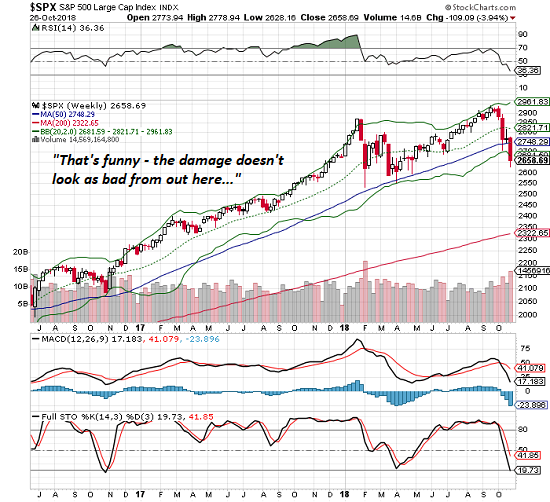
My explanation is much more simple: the status quo is fragile, and everyone’s grip on the crumbling cliff-edge of “prosperity” is precarious–and we all sense it. The security we all took for granted is turning to sand as the system breaks down. Job security–you’re joking, right? Pension security–you take us for chumps? Sure, your bank account is guaranteed by the FDIC, but nobody’s guaranteeing your income, your purchasing power or the security of your grasp on the good life.
…click on the above link to read the rest of the article…
Shadow Banning Is Just the Tip of the Iceberg: We’re All Digital Ghosts Now
Shadow Banning Is Just the Tip of the Iceberg: We’re All Digital Ghosts Now
Just about the only bulwark against being silenced by the modern-day tech-corporate-NKVD-Stasi is Patreon.
If you do a search of shadow banning, you’ll find sites that claim to help you identify whether Twitter or Instagram has shadow banned your account. The basic idea of shadow banning is to spoof the shadow-banned user into believing their public posts are visible to all while in reality the posts are visible only to the user or in some cases to the users’ followers.
Wikipedia’s definition of shadow banning is:
“Shadow banning (also called stealth banning, ghost banning or comment ghosting) is the act of blocking or partially blocking a user or their content from an online community such that it will not be readily apparent to the user that they have been banned.”
Here is whatis.com’s description: “Shadow banning is controversial because it allows an administrator or moderator to effectively become a censor and prevent specific users from interacting with other members of an online community on an equal basis.”
Shadow banning and outright banning are only the tip of the iceberg: everyone who posts content on the web or social media is subject to much more subtle and completely opaque controls on how much of your digital presence has been ghosted–not just in social media communities but in searches and how links to your site/content and re-posts of your content are handled by the tech cartel that controls what’s visible and “found” on the web and social media.
This cartel is dominated by Google and Facebook. Google controls over 90% of all search: what search results are displayed, the weight given to links (the page-rank assigned to websites) and a variety of other factors that can be depreciated, removed, omitted or blocked by algorithms and/or human censors (a.k.a. administrators) without recourse and without the site or user being informed.
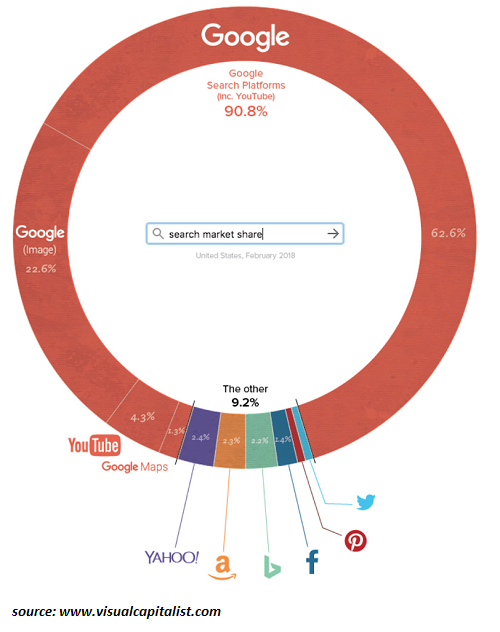
…click on the above link to read the rest of the article…
Globalization Has Hollowed Out Rural America
Globalization Has Hollowed Out Rural America
…click on the above link to read the rest of the article…
The Coming Inflation Threat
The Coming Inflation Threat
Falling asset inflation plus rising cost inflation equals stagflation.
Inflation is a funny thing: we feel it virtually every day, but we’re told it doesn’t exist—the official inflation rate is around 2.5% over the past few years, a little higher when energy prices are going up and a little lower when energy prices are going down.
Historically, 2.5% is about as low as inflation gets in a mass-consumption economy like the U.S. that depends on the constant expansion of credit.
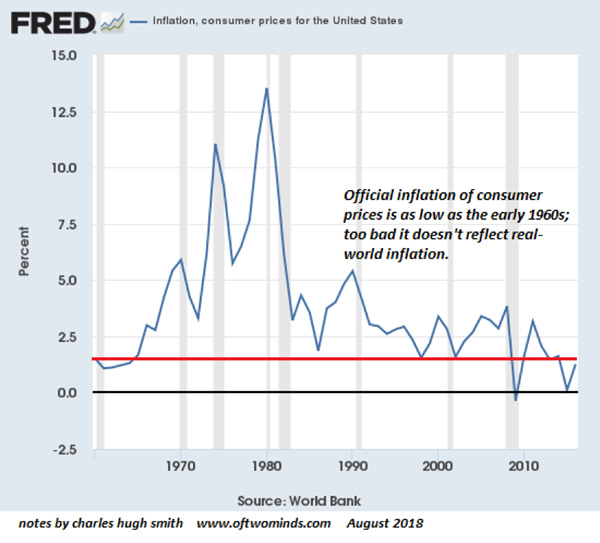
But even 2.5% annually can add up if wages are stagnant. According to the Bureau of Labor Statistics (BLS), what cost $1 in January 2009 now costs $1.19. https://www.bls.gov/data/inflation_calculator.htm
That 19% decline in the purchasing power of dollars is tolerable as long as wages go up by 20% over the same period, but for many American households, wages haven’t kept pace with official inflation.
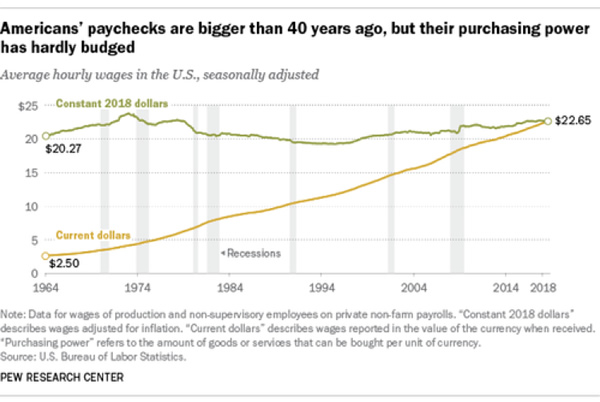
While the nominal hourly wages keep rising, adjusted for inflation, wages have stagnated for decades. Here’s a chart based on BLS data that shows median weekly earnings adjusted for official inflation rose $6 a week after five years of decline:
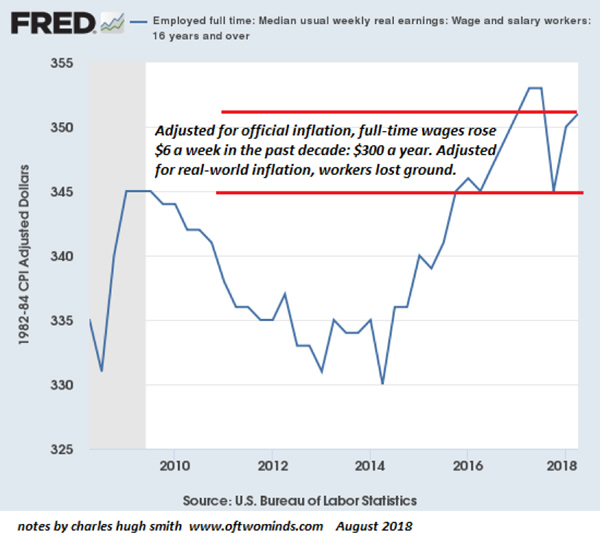
But stagnant wages are only part of the inflation picture: official inflation under-represents real-world inflation on several counts.
First, the weightings of the components in the Consumer Price Index (CPI) are suspect. Many commentators have explored this issue, but the main point is the severe underweighting of expenses such as healthcare, which is only 8.67% of the CPI but over 18% of the U.S. Gross Domestic Product (GDP).
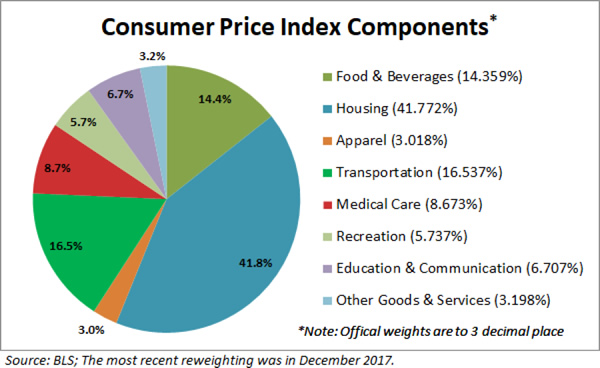
Second, the “big ticket” components—rent/housing, healthcare and higher education—are under-reported for those who have to pay the unsubsidized cost. The CPI reflects minor cost decreases in tradable commodity goods such as TVs and clothing that are small parts of the family budget, while minimizing enormous expenses such as college tuition and healthcare that can cost $20,000 annually or more.
…click on the above link to read the rest of the article…
Mutiny, Class, Authority and Respect
Mutiny, Class, Authority and Respect
Humiliation and fear of a catastrophic decline in status foment mutiny and rebellion.
I recently finished The Bounty: The True Story of the Mutiny on the Bounty, a painstakingly researched history of the mutiny, but with a focus on how the story was shaped by influential families after the fact to save the life of one mutineer, Peter Heywood, and salvage the reputation of the leader, Fletcher Christian, via a carefully orchestrated character assassination of Captain Bligh.
The author, Caroline Alexander, summarized the ambiguous incitement of mutiny by Christian thusly: “What caused the mutiny on the Bounty? The seductions of Tahiti, Bligh’s harsh tongue – perhaps. But more compellingly, a night of drinking and a proud man’s pride, a low moment on one grey dawn, a momentary and fatal slip in a gentleman’s code of discipline – and then the rush of consequences to be lived out for a lifetime.” (p. 407).
The full tale is a fascinating reflection of the dynamics of class, authority and respect, and thus to some degree humiliation and fear of loss of status. Though the mutiny illustrates the particulars of British society and naval culture in the 18th century (the mutiny occurred in 1789), it also offers lessons to us in the 21st century.
Until recent scholarship suggested otherwise, William Bligh has been remembered as a cruel tyrant whose excesses triggered a righteous mutiny. The truth is Bligh went to great pains to minimize punishment on board his ship, and was hoping to avoid any severe punishments over the 3 year year voyage. He also went the extra mile in keeping the ship clean and well-provisioned, foregoing the profit most captains made by procuring the lowest quality provisions for the crew and pocketing the difference.
…click on the above link to read the rest of the article…
Is the Greatest Bull Market Ever Finally Ending? (Hint: Follow the Money)
Is the Greatest Bull Market Ever Finally Ending? (Hint: Follow the Money)
The key here is the gains generated by owning US-denominated assets as the USD appreciates.
Is the Greatest Bull Market Ever finally ending? One straightforward approach to is to follow the money, i.e. global capital flows: assets that attract positive global capital flows will continue rising if demand for the assets exceeds supply, and assets that are being liquidated as capital flees the asset class (i.e. negative capital flows) will decline in price.
Global capital flows are difficult to track for a number of reasons. A significant percentage of global mobile capital is held in secretive offshore tax havens and “shadow banking,” and tracking global corporate capital flows is not easy. Capital held in precious metals may not be reported, and assets such as enterprises and collectible art may be grossly undervalued for tax purposes.
Toss in shadow holding companies, LLCs with obscure trails of ownership, etc. and a definitive account of global capital flows is ultimately a guesstimate.
Despite the limitations of tracking global wealth, Credit Suisse Research Institute’s (CSRI) issued Global Wealth Report 2017 gives us some clues about where capital is flowing in and where it’s leaving for safer, higher-yield climes.
The first step in measuring global capital flows is to note that conventional capital is denominated in currencies which fluctuate in relative value. Of the roughly $300 trillion in global assets (Credit Suisse pegs the total in 2017 at $280 trillion, but other estimates range well above $300 trillion), about $8 trillion or so is in precious metals, and a tiny sliver is in cryptocurrencies. (Bitcoin’s total market capitalization is currently around $112 billion and Ethereum’s market cap is around $21 billion–signal noise in the $300 trillion sloshing around the world seeking safety, low/zero taxes, capital gains and high yields.)
…click on the above link to read the rest of the article…




